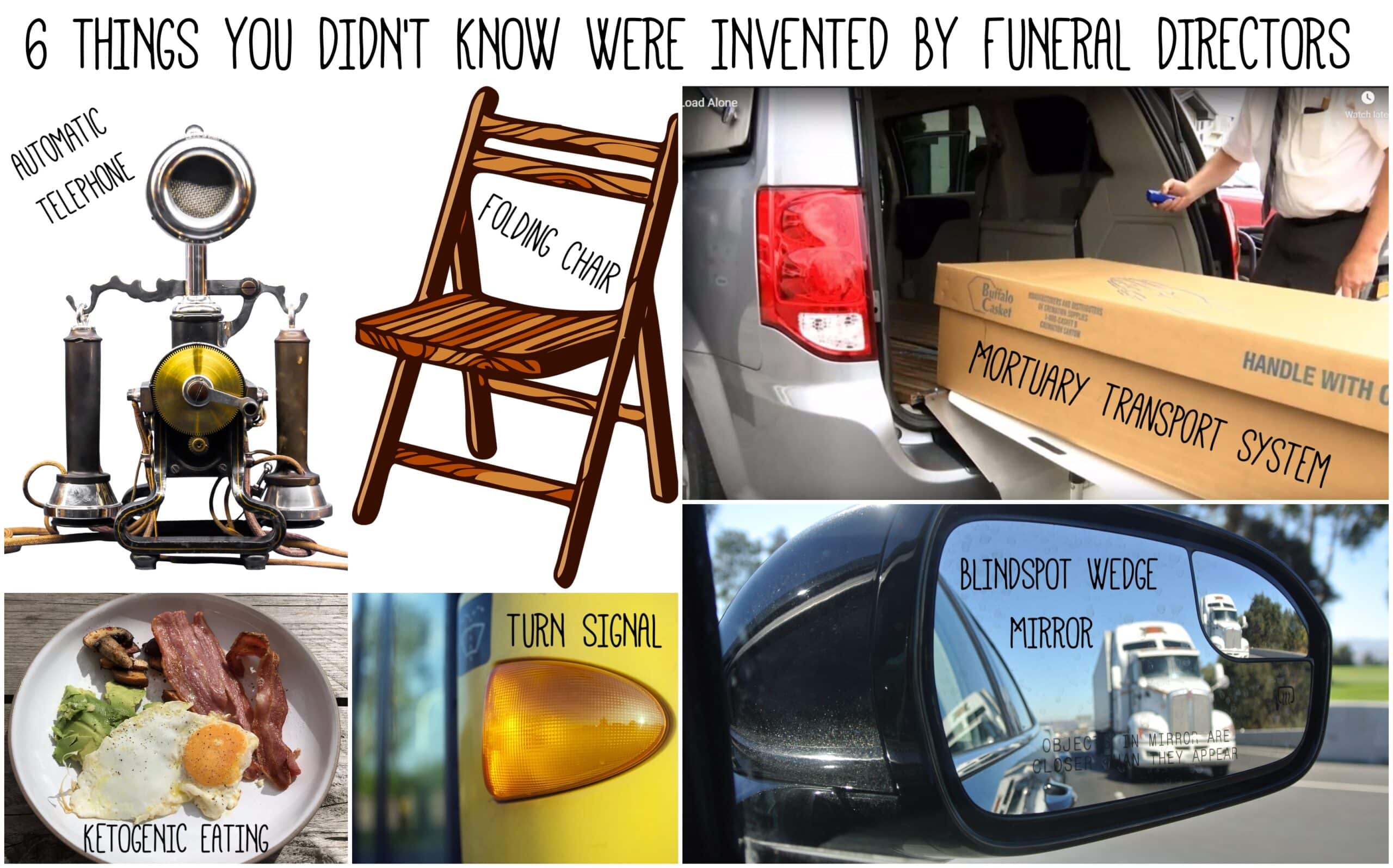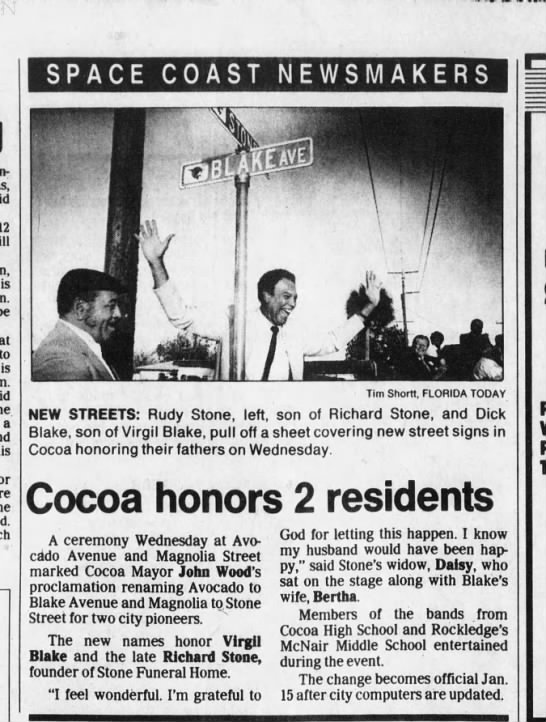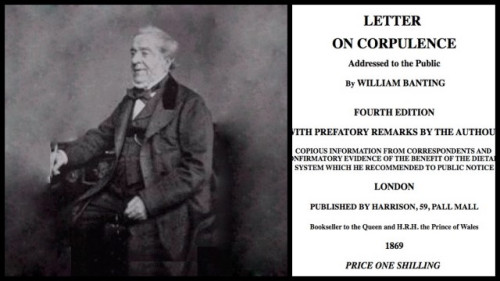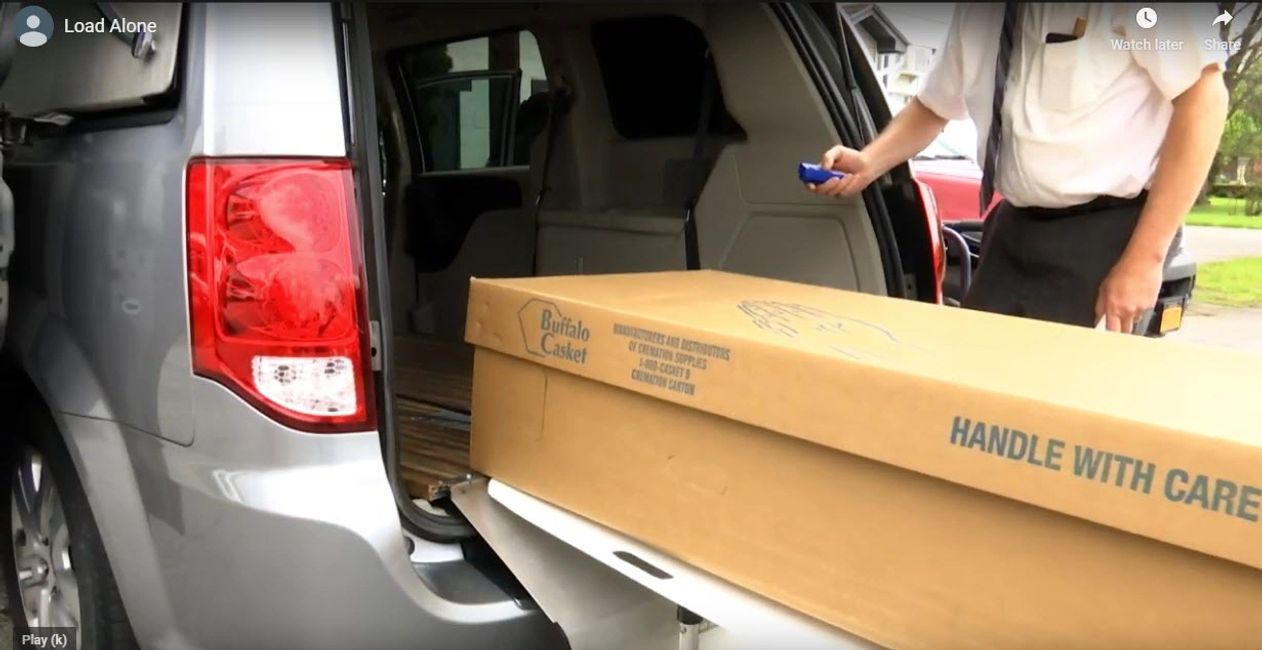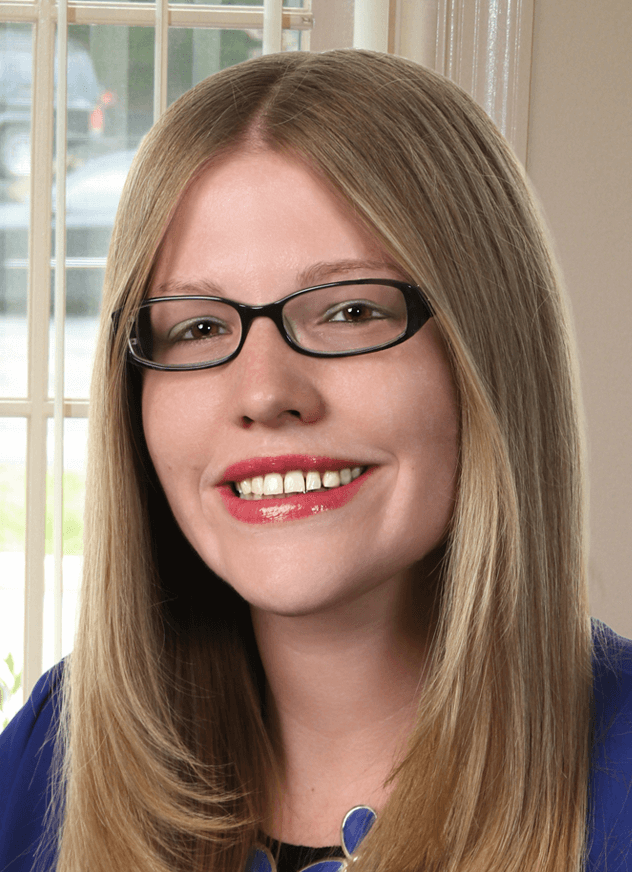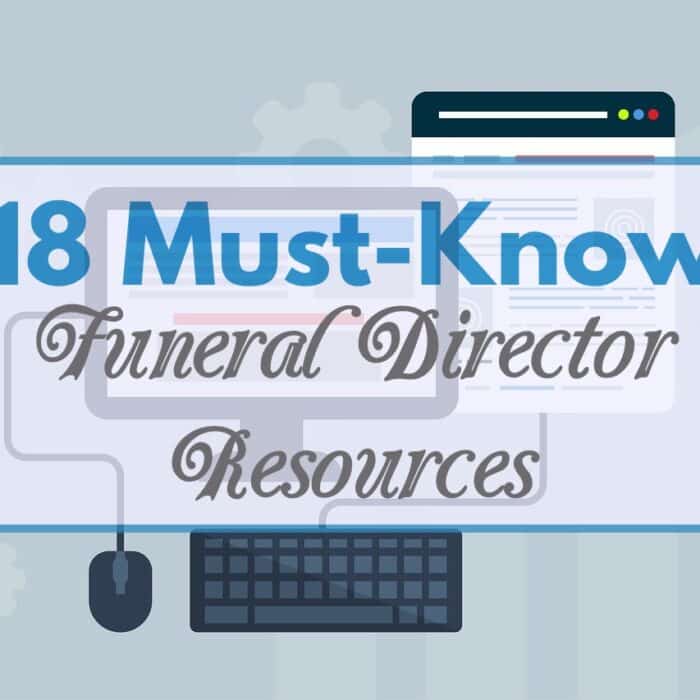Sep 26, 2019
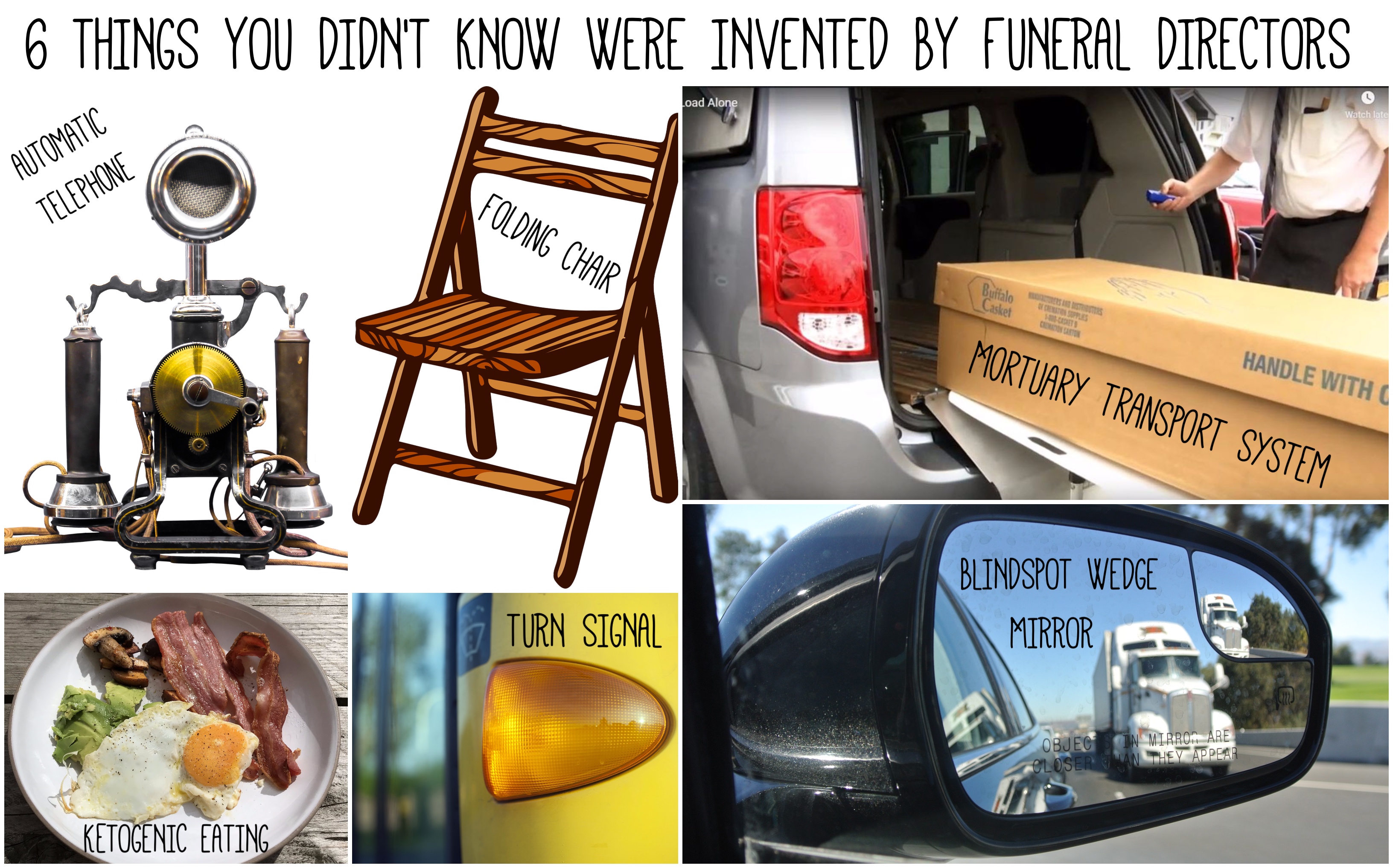
Since the birth of the funeral industry, ideas from professionals who work in death care have influenced our culture’s traditions and behaviors. Many people do not know that, in addition to shaping end-of-life rituals, funeral professionals have contributed tremendously to advancements in communication, transportation, manufacturing and other industries. Funeral professionals are known for their expert ability to honor and memorialize the dead, but when it comes to innovation, they are also highly skilled at bringing new ideas to life.
With so many tasks to juggle simultaneously, morticians must be critical thinkers capable of resolving complications quickly. Throughout history, these problem-solving skills have given some creative funeral directors the ability to uncover new groundbreaking discoveries. In many cases, the innovation was born out of a funeral director growing frustrated by a common problem they observed day in and day out. A combination of ingenuity and determination, mixed with a dash of exasperation, provided these pioneers with the drive they needed create new solutions.

6 Innovations Revolutionized by Funeral Director Inventors
1. The Automatic Telephone
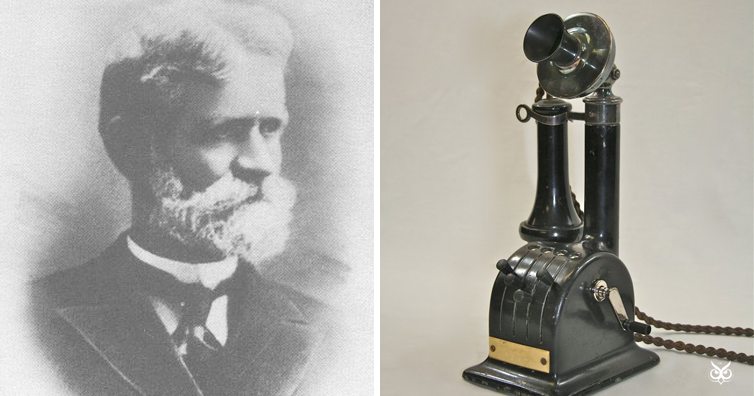
We may be a little biased, but beyond a doubt our favorite funeral director inventor of all time was Almon Strowger. Strowger earned his place in history back in 1891 by creating the very first automated telephone system that allowed phone calls to be directly connected without the need for a switchboard operator. Known as the Strowger Switch, this invention was dubbed by early advertisements as “the girl-less, cuss-less, out-of-order-less, wait-less telephone. In 1958, over 65 years after it was introduced, Automatic Electric Company affirmed, “The principals which this device pioneered are the root of all automation today.”
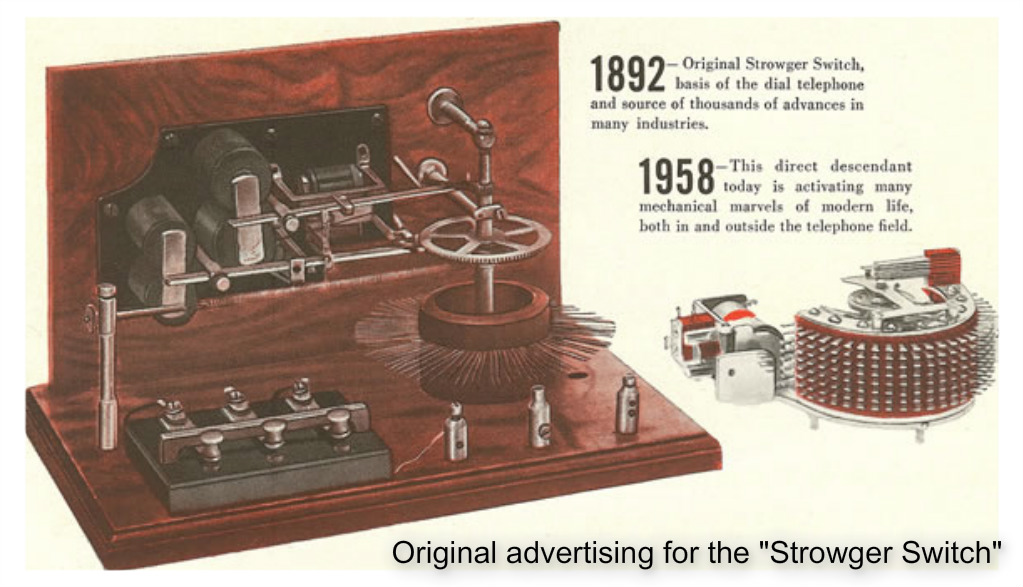
Of course, it’s not just the invention itself that makes us swoon for Strowger – it’s the story behind its creation. Imagine this – you’re a funeral director working in Kansas City during the late 1800s. You are highly committed to serving families in the community and are doing everything right, but for no discernable reason your business is shrinking. Fewer families are contacting you for your services. Finally, one day, you identify the source of your lost business. Your biggest competitor has a wife working as a switchboard operator—and she’s sending all of your calls to him!
Strowger did not have any previous experience as an inventor (it is reported that he initially constructed a model of the Strowger Switch from a round collar box and some straight pins), but he became determined to find a solution that would prevent this dilemma from ever happening to him or another business owner again. By devising a method for customers to dial telephone numbers directly, Strowger not only solved his problem but essentially made an entire job industry obsolete by eliminating the need for switchboard operators.
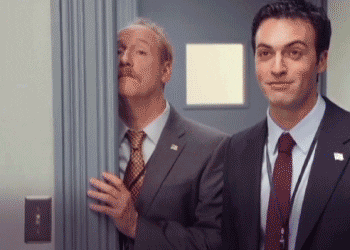
Two powerful lessons can be learned from the Strowger story: 1) Using sneaky, backhanded tricks to steal business from competitors might come back to haunt you (and everyone you’ve ever worked with) down the line. 2) Even in 1891, funeral directors understood the important role of the telephone and the significance of protecting their firm’s calls.
2. The Folding Chair
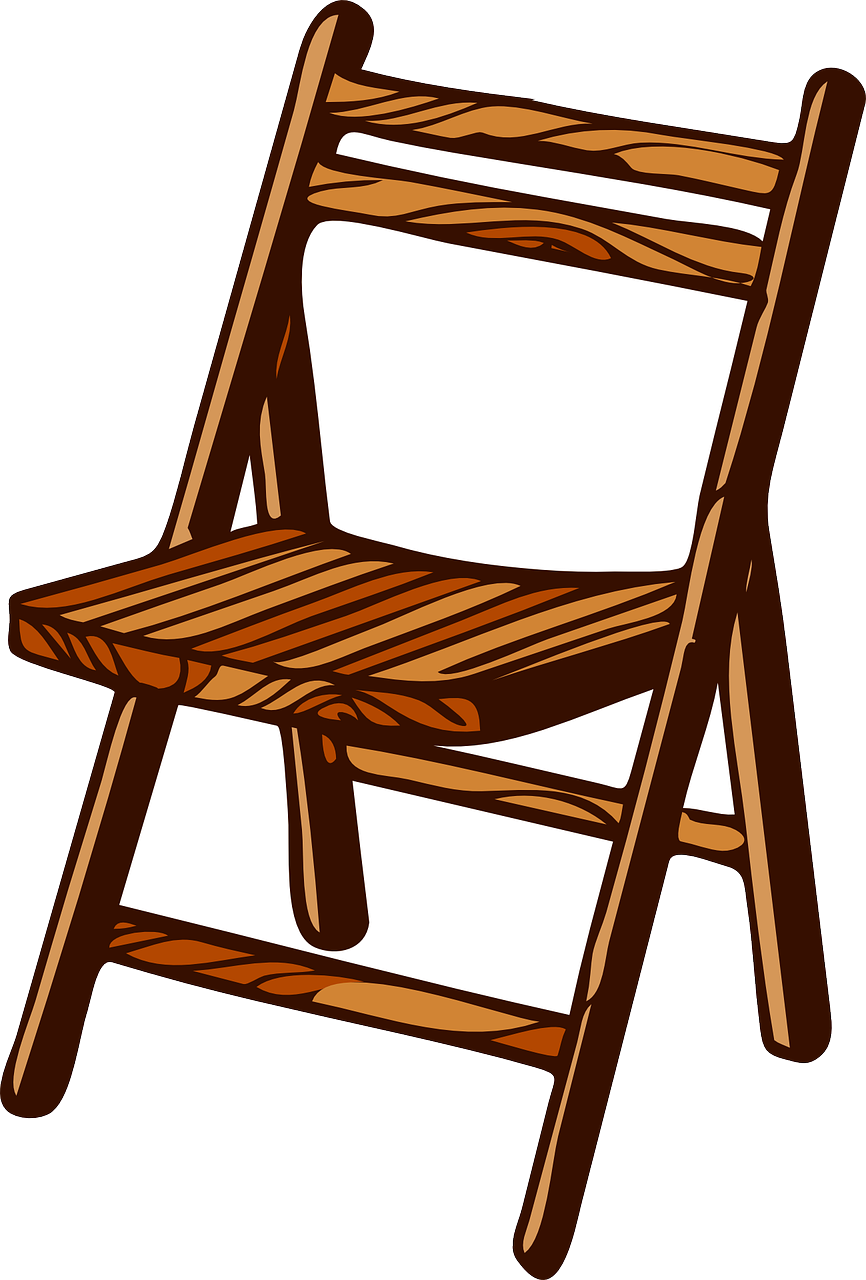
During the 19th Century, funeral parlors evolved from furniture, ambulance and wagon companies. In 1840, a gentleman named Seth G. Tufts found success in Ohio by establishing a carriage and wagon-making business. Tufts was also the town’s undertaker and after the cholera pandemic of 1850, he was asked to build coffins for the deceased.
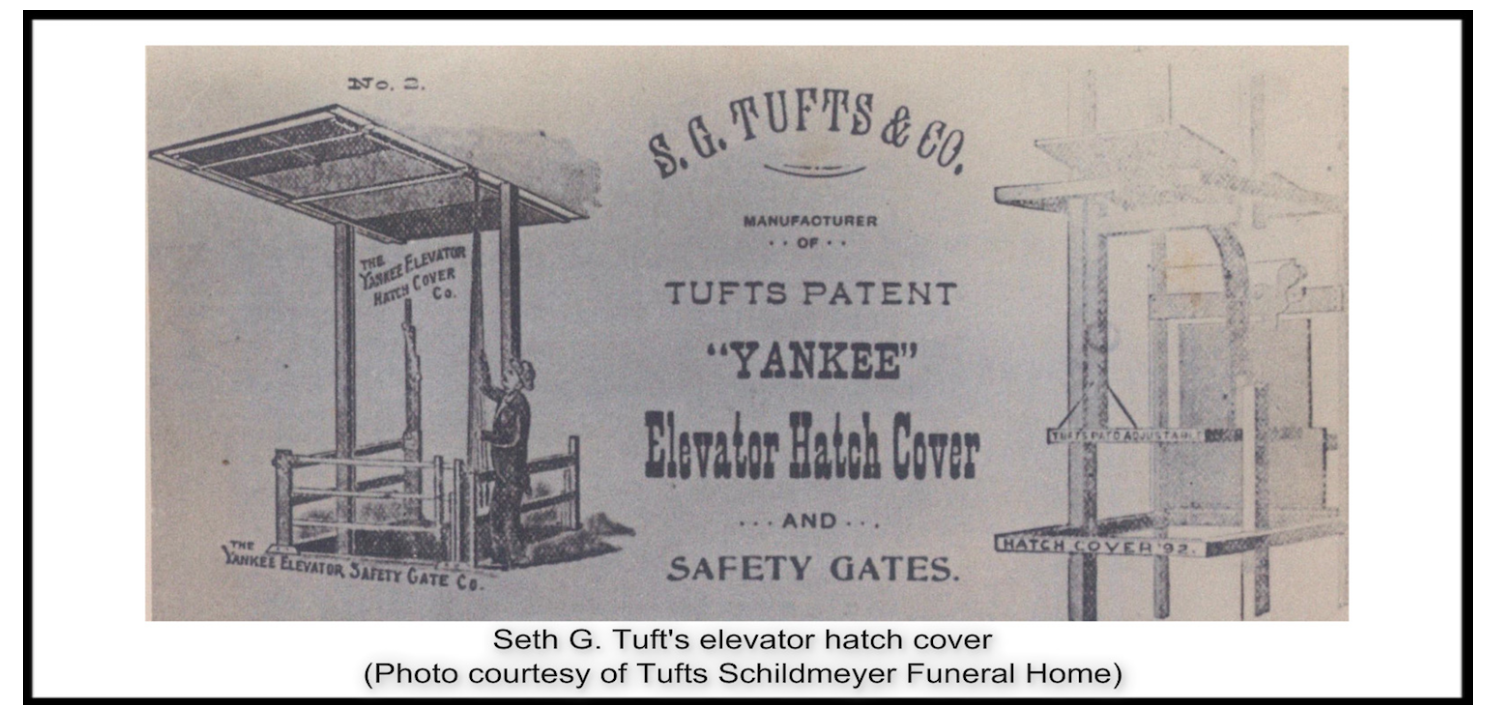
By 1869, Tufts had turned his undertaking business over to his son in order to focus on what he loved doing most – inventing. During his lifetime, he filed several patents that helped improve processes for numerous businesses. Among his inventors were a portable fire escape, a portable fence, a safety hatch cover for elevators and an adjustable roof system for collecting water from cisterns.
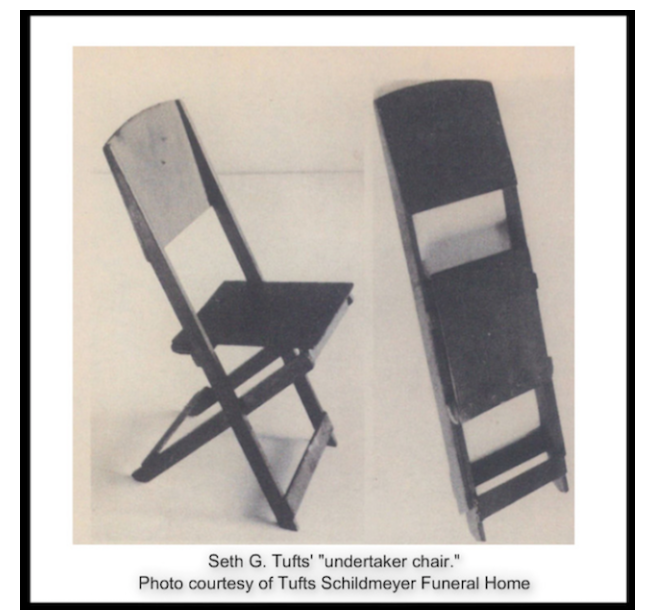
Of course, Tufts most notable achievement was the Undertaker’s Chair which was the first foldable chair in existence. One can imagine how difficult setting up for a service must have been for funeral directors prior to Tufts’ invention. It allowed for chairs to be easily moved and stowed, making events like weddings, graduations and parties as well as funerals much easier to arrange.
Tuft’s legacy lives on today both in the advancements he brought to fruition and in the heritage of the funeral home he founded. Today, the Tufts Schildmeyer Funeral Home remains family owned with three locations in Blanchester, Goshen and Loveland, OH. The funeral home’s mission statement, “A Caring Tradition and Celebration of Life since 1840.” pays tribute to their founder’s legacy and honors the funeral home’s rich history. Watch the video above to learn more.
3. The Automobile Turn Signal
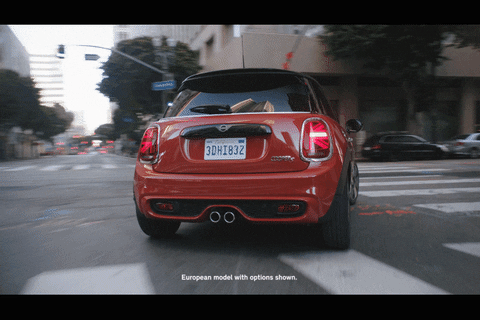
By the year 1912, approximately one million patents had been filed in the United States. However, large portions of the population were not afforded the same opportunities to bring their inventions to the marketplace. In 1923, funeral director, Richard Stone, established the first African American funeral home in the Cocoa, FL area. Previously, Stone had worked as an auto mechanic but was forced to switch professions because white people would not allow him to work on their cars. This led him to pursue a career in mortuary science instead where he served African American families, often struggling to make ends meet due to the racial injustice of the time.
In 1935, Stone awoke from a dream with the idea of building the first Automobile Turn Signal. He used a coffee percolator to make a prototype and filed for a patent. Unfortunately, Stone lived during a time when credibility was defined by skin color and he was unable to find a manufacturer willing to produce his invention. Although he never received the credit or profit he deserved, Stone’s idea did a great deal to improve driving safety.
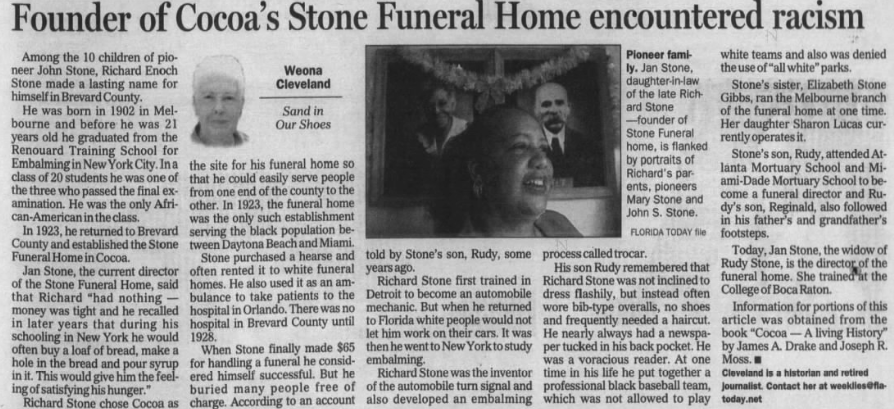 Click on image to read enlarged version of article
Click on image to read enlarged version of article
“Others soon copied enough of Richard Stone’s turn signal and implemented just enough changes to file for different patents and make all the money,” wrote author Bob Harvey in his book, Cocoa, Florida: A History. “Nevertheless, Richard Stone of Cocoa, Florida invented the automobile turn signal.”
Today, Stone’s achievements are now recognized and celebrated within the city of Cocoa, FL with a special landmark. A section of the town has been renamed Richard E. Stone Historic District which is a stop along the Florida Black Heritage Trail. “The district is named for Richard E. Stone, who invented and patented the Directional Signal Light for automobiles in 1935” (Shared from VisitFlorida.com). The Stone Funeral Home, with locations in both Cocoa and Melbourne, FL, remains an integral part of the community and is still owned and operated by the Stone family.
4. Ketogenic Eating (aka the Keto Diet)
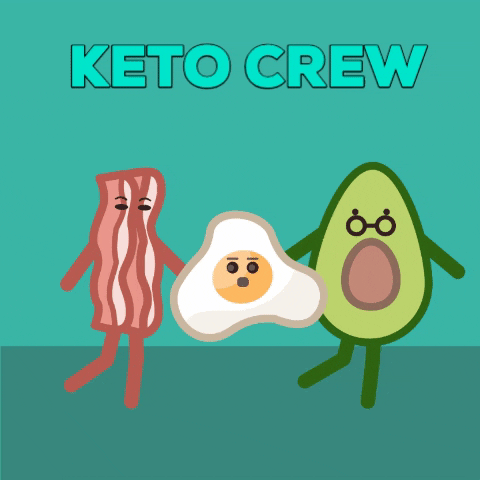
When the Atkins Diet and Keto Diet first became popular, many of us saw headlines or heard from others that there was a new or revolutionary nutritional regime that was helping people lose weight. However, you may be surprised to learn that low-carb, low-sugar and high-protein diets date as far back as 1862…and even more surprised to learn it was a funeral director who provided the first written record of the diet regime.
William Banting was a London mortician born into a family that had handled royal funerals dating back to the mid-18thcentury. After a successful career in which he was credited with handling the first modern royal funerals, Banting retired but soon fell into a depression over his inability to lose weight, lack of mobility and deteriorating health. Then, after decades of unsuccessful dieting, Banting finally discovered a method that allowed him to shed 52 lbs.
Banting’s nutritional regime contradicted the medical community’s recommendations for treating obesity. Knowing that as an outsider, he would have great difficulties in publishing his discovery in a medical journal, Banting decided to publish a free booklet titled “Letter of Corpulence, Addressed to the Public” describing his eating routines and how his new diet made him feel. His publication made him the very first person to promote the benefits of a low-carb diet which, incidentally, was referred to for many years as The Banting Diet. Of course, Banting didn’t know what he was describing in the booklet was ketogenic eating – the concept that your body will go into a fat-burning state to stay live when carbohydrates are not consumed.
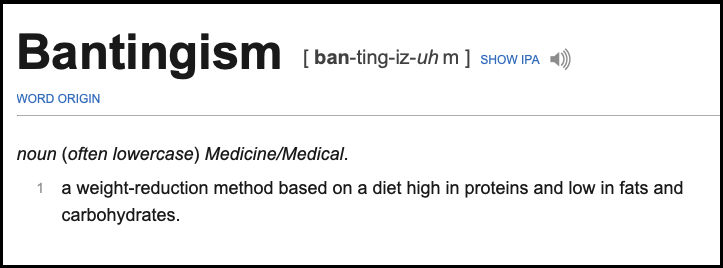
By the 1870s, “to bant” became synonymous with “to diet.” More than 50,000 copies of Banting’s booklet were published, though the retied undertaker felt guilt over the idea of making money from others’ grief, so he donated all the proceeds to charities for the poor. We were not surprised when we read this part of Banting story as it definitely sounds like something a funeral director would do!
5. The Blindspot Mirror
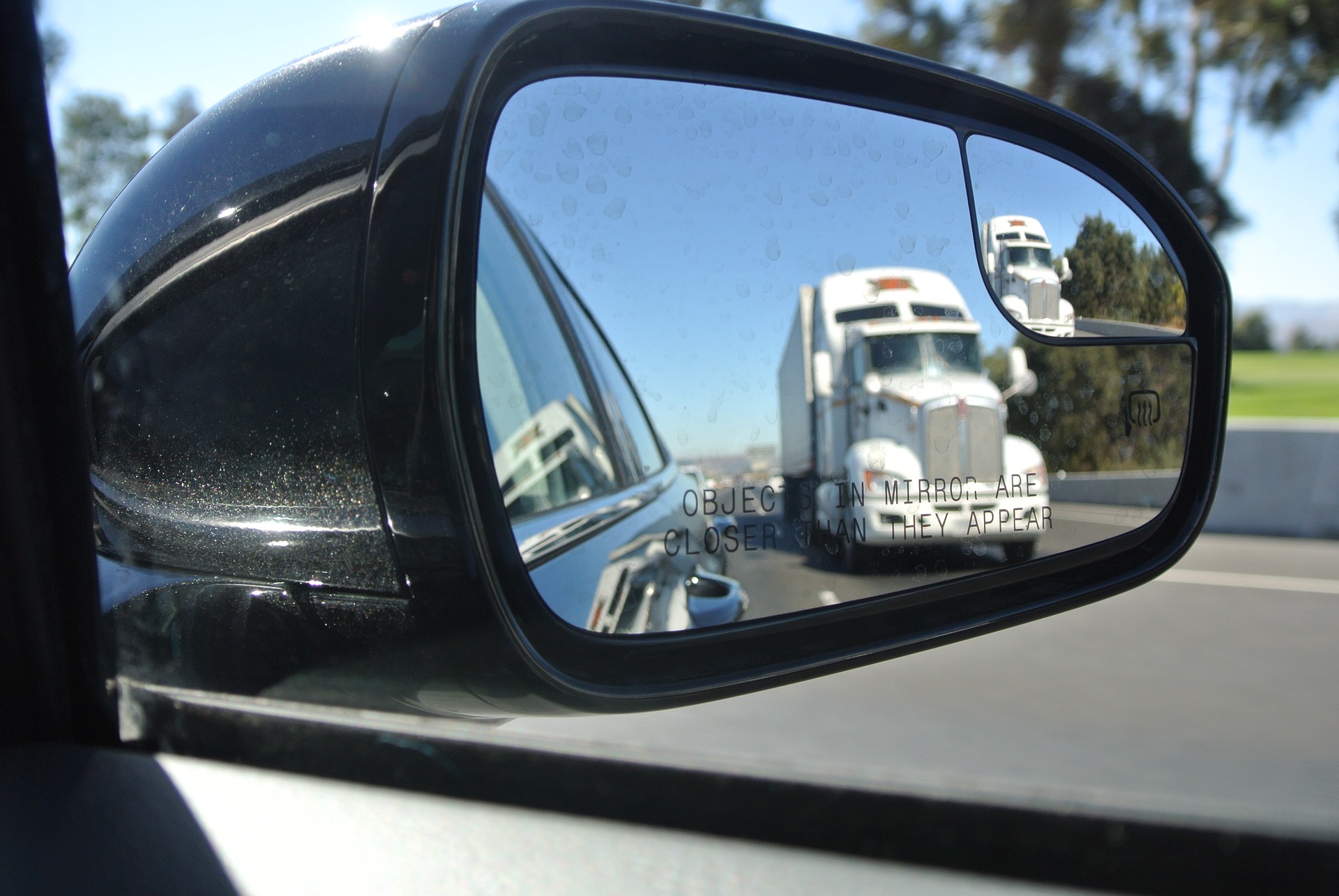
In 1975, Funeral Director Robert Docie was driving a hearse for Schoedinger Funeral Homes and almost got into an accident due to another vehicle entering his blind spot. Only 20 years old at the time, Docie began to brainstorm a way to create a blind spot mirror that would prevent dangerous incidents like this from occurring. He spent years commercializing his idea, eventually marketing and selling it as the Docie Wedge Blindspot Mirror in Kmart, Wal-Mart and other automotive outlets.
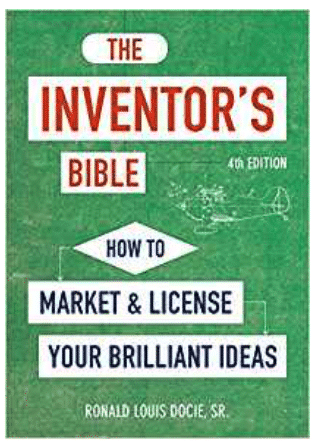
Today, Ronald Docie is considered a leading expert in bringing new inventions to market. He has provided consultation to help entrepreneurs patent and sell their ideas. He has also advocated on behalf of independent inventors during U.S. congressional meetings. Docie’s book, The Inventor’s Bible, is considered to be a definitive guidebook for introducing a new product or service. His influence on entrepreneurs over the past 30 years has helped shape many brilliant ideas into successful businesses. Although Docie’s experience as a funeral director was brief, it no doubt had a lasting impact on his success. How inspiring to think the catalyst for all of that progress began as clever idea inside of a hearse!
6. LoadAlone™ Mortuary Transport System
If resilience alone could move mountains, Funeral Director David Murphy would have remapped the world. His resolve was truly put to the test in 2013 when he suffered a life-changing motorcycle accident that left him with a several spinal column, multiple organ injuries, smashed ribs and a crushed leg. After years of recovery, David became determined to start working again, taking on removal cases and picking up bodies for funeral homes. He soon realized it would not be possible for him to handle removal calls alone due to the strain on his body.
Instead of leaving the business, Murphy invented a new device called LoadAlone™ that makes it possible for one person to safely load and unload mortuary cargo weighing in excess of 400 lbs. LoadAlone™ is multi-position winch pulling system to load human remains in vehicles for removals and transportation to funeral homes, airports and crematories. The patent-pending device can be operated by one person using a push button remote control and uses a 20 ft, 6,000 lb synthetic cable along with a 3,000 lb winch that can easily be installed onto or removed from funeral vehicles.
LoadAlone™ was invented by Murphy specifically to help funeral professionals reduce the risk of injuries that happen as result of the labor-intense removals they must often handle alone. The system has many other benefits as well, such as the time it saves funeral directors when making removals and the protection it offers to mortuary vehicles. Murphy, who currently works at his family funeral home, Paul L. Murphy & Sons in Newark, NY, will be demoing the LoadAlone™ System at this year’s National Funeral Directors Association Convention in Chicago.
“The whole nature of what we’re doing is pretty straining on our bodies. I was always at the chiropractor’s. This will help people work further into their careers with less physical problems as they age. And it evens the playing field for women and older folks,” Murphy shared (Source: The New York State Funeral Directors Association).
Perhaps resilience cannot move mountains, but Murphy is certainly helping his colleagues in the funeral profession to move and lift more easily.
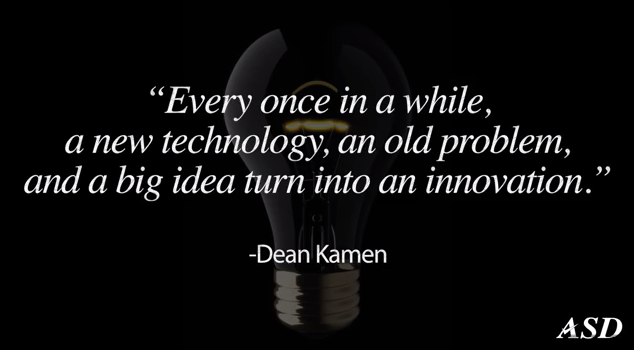
Today, those working in funeral service continue to drive progress with new inventions, products and services. Here at ASD, we believe it is so important to encourage innovation within our profession. Our company has been awarded numerous patents and we have the distinction of being the only company to receive multiple NFDA awards in recognition of new solutions we have created for funeral professionals.
Established in 2009, the NFDA Innovation Award represents the pinnacle of achievement for today’s funeral service innovators. This award inspires companies within the funeral profession to seek out new ideas, technologies, and processes to make a positive impact on funeral directors and the families they serve. While no other company has won this award more than once, ASD is proud to be a four-time recipient. Year after year, our company has demonstrated how fully committed we are to seeking out new and inventive ways to resolve communication issues for funeral directors.
Were you surprised by any of the inventions on our list? Which invention has made the most impact on the world? Which one do you think has the most interesting origin story? Please share in the comments below.
RELATED READING
Overachieving Undertakers – How Funeral Director Inventors Changed History
Two ASD Features Selected as Finalists for 2018 NFDA Members’ Choice Award
